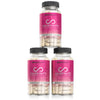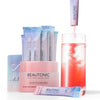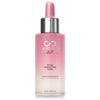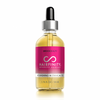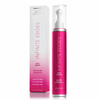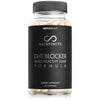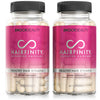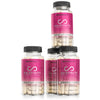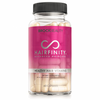
How to Repair Bleach Damaged Hair: 10 Easy Steps!
According to a 2011 research, hydrogen peroxide (bleach) is a chemical that increases the stains on the hair and aids in the breakdown of the melanin which it naturally contains.
Damaged bleached hair seems voluminous because of the swelling that occurs due to the process. Aside from that, the absence of melanin leaves your hair looking lifeless, and the hue of the hair dye might cause it to become red or yellow.
A hairstylist's reaction to any question about whether or not one should bleach their hair at home is likely to be a mixture of anxious and even furious reactions.
Although many individuals have opted to take things into their own hands and become platinum blond in the privacy of their own homes, they may not be competent. Even if the results are satisfactory, likely, your hair does not seem healthy. So it's more than likely to appear uneven or brassy and feel brittle and dry to the touch.
To help you fix bleached hair from the box dye nightmares, we contacted some experts for their recommendations on how to do it. How to reclaim your hair's health from the materials you use is laid out here.
Understanding Bleach-Damaged Hair
How is bleaching hair typically related to hair damage? To better understand the effects of bleach on hair, let's take a closer look. Bleach enters the hair shaft and removes your hair's natural color in the quest to get the blonde hue you want. As a result, your hair's natural oils and fatty acids will be damaged as well.
What is the outcome? As a result, your hair follicles are more vulnerable to damage caused by hot tools, UV radiation, rain, and wind. Bleached hair, on the other hand, tends to feel drier and coarser because of the loss of moisture that occurs when the hair is damaged.
If you bleach your natural color and follow the proper hair care regimen to fix broken hair, you may quickly restore your hair to its natural state.
Below are some of the effects that might result from a bleach damaged hair:
-
Loss of Natural Shine
In mixing with the oils in your hair that give it its shine, bleach affects them and removes their natural sheen.
-
Frizzed-up locks
Because hair is devoid of fluids that lubricate it, it becomes tangled up more easily.
-
Severed ends
As a result of bleaching your hair, your hair's protective cuticle is damaged, allowing moisture to escape and causing dryness or split ends readily.
-
Itchy Hair
Bleaching damages the hair's cuticle, which prevents it from being smooth and bouncy. This leads to frizz. The follicles are shedding. Breakage may cause hair to fall out in the worst-case situation.
Bleach-damaged hair may be repaired easily, as long as the correct products are used, and a multi-step strategy is used to combat dryness, damage, and loss of gloss while also preventing brassy tones from appearing in your hair.
How to Repair Bleach Damaged Hair: 10 Easy Steps!
-
Keratin treatment
The keratin treatment is one of the most efficient techniques to fix bleached hair that has been damaged.
Protein-rich deep conditioning masks, like keratin treatments, are ideal for repairing color-treated hair that has been damaged.
First, you'll apply a serum to your hair, and then a flat iron is used to infuse it with the serum. Depending on how frequently you wash your hair, a keratin treatment might last one to two months.
Having a keratin treatment can restore shine to your hair. You can go to your local salon for a keratin treatment or do it yourself at home.
-
Stay away from bleach for a little
As a famous hairdresser who's worked with the likes of Beyonce and Jennifer Lopez, Rita Hazan recommends a break from color and only utilizing treatments to restore and hydrate if you do have dry damaged hair.
Chemically stripping your hair of color is what bleach does, and then when it pertains to box dye, producers base their formulae on "normal hair" instead of your own. At-home hair dyes may dissolve a tiny amount of your hair color or eradicate it. It's worse to use toxic items repeatedly on your hair. Follow Hazan's advice and "take a break."
-
Use treatments specifically formulated for you and your hair.
Salon treatments aren't tailored to each person's hair requirements. There are now products on the market that can analyze your hair and blend the elements to help revive it, such as those made by Kerastase. This process enables you to keep all of your current hair habits while also enhancing the appearance of your hair by adding shine and vibrancy.
-
Avocados are excellent for deep conditioning
Conditioning is necessary for any damaged hair caused by bleaching. Make your homemade hair mask by combining one fresh avocado with one yolk of an egg. When using this product, be sure to use it on damp hair, rub the scalp for several minutes, and let it sit for 20 minutes. Rinse your hair with lukewarm water afterward, or shampoo it if you'd like.
-
Use protective formulas
Your hair may be bleached again after a specific time, even if your hair is damaged. Your hairdresser should put on a protective lotion when bleaching it this time, though.
Using a protective substance during chemical treatment is a common practice (like bleaching). To begin with, a heat-protecting solution is added to the bleaching product, and then a second solution is sprayed on the hair once the bleaching process is complete.
-
Apply some butter to your scalp
Things in your home may help repair damaged hair that you may not be aware of. Butter is used in one of these foods. Apply a tiny amount to your hair scalp and begin rubbing for a few moments. Let the butter rest for 30 minutes in a shower cap over your head. Shampoo your hair after rinsing it off, and you'll notice an immediate shine.
-
Apply a mixture of your shampoo with an egg to your hair
Since the 11th century, eggs (particularly egg whites) have mostly been regarded as an excellent remedy for hair repair. If your hair has been bleached, it lacks protein, which can be found in the yolk. Eggs also contain lecithin, which may help hydrate and condition your hair. It is possible to clean your hair with an egg and shampoo, which you can make in your kitchen. After two weeks of using this procedure, your hair will be noticeably softer.
-
Bananas
Bananas, like avocados, are great for damaged hair. The fiber, vitamins, as well as proteins that they provide, are exactly what your hair is lacking. It's necessary to include yogurt in a mixture of ripe bananas, honey, and castor oil (optional). Keep the mask on for 30 minutes, being careful not to get it on your roots. Shampoo may then be used to clean your hair.
-
Don't forget to stay clear of your previous habits
It isn't just bleaching your hair that can cause it to become brittle. If you use a hairdryer and maybe conditioner too much or wash your hair every day, you should stop doing so. When you wash your hair, use lukewarm water, and be sure to cut your hair at least twice a year. Overbrushing may damage the follicles and impede the development of hair; thus you should avoid doing so.
-
Homemade hair masks
Use this homemade hair treatment to seal your tresses and bring back their sheen. In order to repair significant bleach damage on medium-length hair, use two teaspoons of your preferred natural oil or a combination of your most refined natural oils such as avocado or coconut oils, olive oils, or almond oils.
Add one yolk and a tbsp. of aloe vera gel after that. Heat the product in a boiling water bath after blending the ingredients; avoid overheating it.
Apply the paste to your hair, concentrating on the ends. Let it rest for an hour under a shower cap, then remove the shower cap. Finally, use shampoo and lukewarm water to wash your hair thoroughly (cooler water helps more to seal the cuticle).
Bonus tip: Hydrate
Moisturizing oils are the finest approach to restoring the moisture to bleached or heat-damaged hair since they're gentle on the strands.
Ways to Hydrate Your Hair
As a result of bleaching, the hair layer that protects the hair from drying out has been damaged. You may use additional treatments while your hair is regrowing to seal it and help bring back some of its natural radiance.
-
Almonds oil
Hair may benefit from the protein, and vitamin E included in almond oil, both of which attach to your hair's strands and strengthen them. After bleaching, your hair may have holes in the strands that make it more vulnerable to breaking. Incorporate a few drops of almond oil into your morning hair routine, or use it in deep conditioning.
-
Olive oil
If you want to give your hair a boost, just a couple of drops of oil can do the trick! Apply a tiny amount of olive oil to the ends of your hair using your fingers and no more than a couple of drops at a time.
-
Argan Oil
Using argan oil to prevent your hair from additional damage is a good idea because of its antioxidants. After style, use a few drops to lock in moisture and enhance shine.
-
Coconut oil
In addition to sealing your hair and preventing protein loss, coconut oil may also be used to seal your hair. Warm up some coconut oil between your hands before massaging it to your hair's ends and dry, frizzy areas.
-
Use sun protection
Using heat styling tools or the sun might damage your hair after being bleached. Protecting your hair and scalp from the sun's harmful rays is as important as protecting your hair itself. This means that you may either use a hair SPF spray or you can hunt for SPF-infused hair products.
How To Prevent Bleach-Related Injury
Is bleaching your hair damaging every time you do it? The short answer is yes. Damage may be reduced to a degree where it is hardly perceptible. This is especially true when dealing with an expert hairdresser who knows how to bleach hair safely and prevent damage.
Additionally, your colorist may use a professional-level hair strengthening treatment when bleaching your hair, which will help maintain the strength and vitality of your hair.
A pre-lightening process will be necessary if you want to go for an ash blonde or a pastel tint if your hair is usually darker than that. They gradually lift your hair's original color to provide a clean look for your new color.
Final Thought
Bleaching your hair will cause some damage since hydrogen peroxide/hair bleach causes an irreversible chemical reaction on your hair strands. Bleaching would always leave your hair dry and damaged, particularly if you begin with dark hair. So, whenever you want to become blonde without harming your hair, it's essential to be careful and also not make significant changes all at once.
In order to do this, discuss with your hairstylist and come up with a strategy for going blonde in the appropriate manner. Schedule a few blonding procedures and hair care services in between to minimize the damage. Wait three weeks between treatments to allow your hair's cuticle to recover, shut, and lie flat once again. This is the most excellent approach to maintaining your hair health while moving to blonde.
Before bleaching your hair, hair colorists suggest using deep conditioning treatments every night for a week to strengthen the links in your hair strands. When using heat tools to style your hair, apply a protectant to prevent your hair from being too damaged by the bleach.
Although bleach may damage and dry out hair, a lot of work can be done at home to restore softness, shine, and strength. Take extra care with your damaged hair, preserve your natural hair, and use more potent products than you usually would.
















